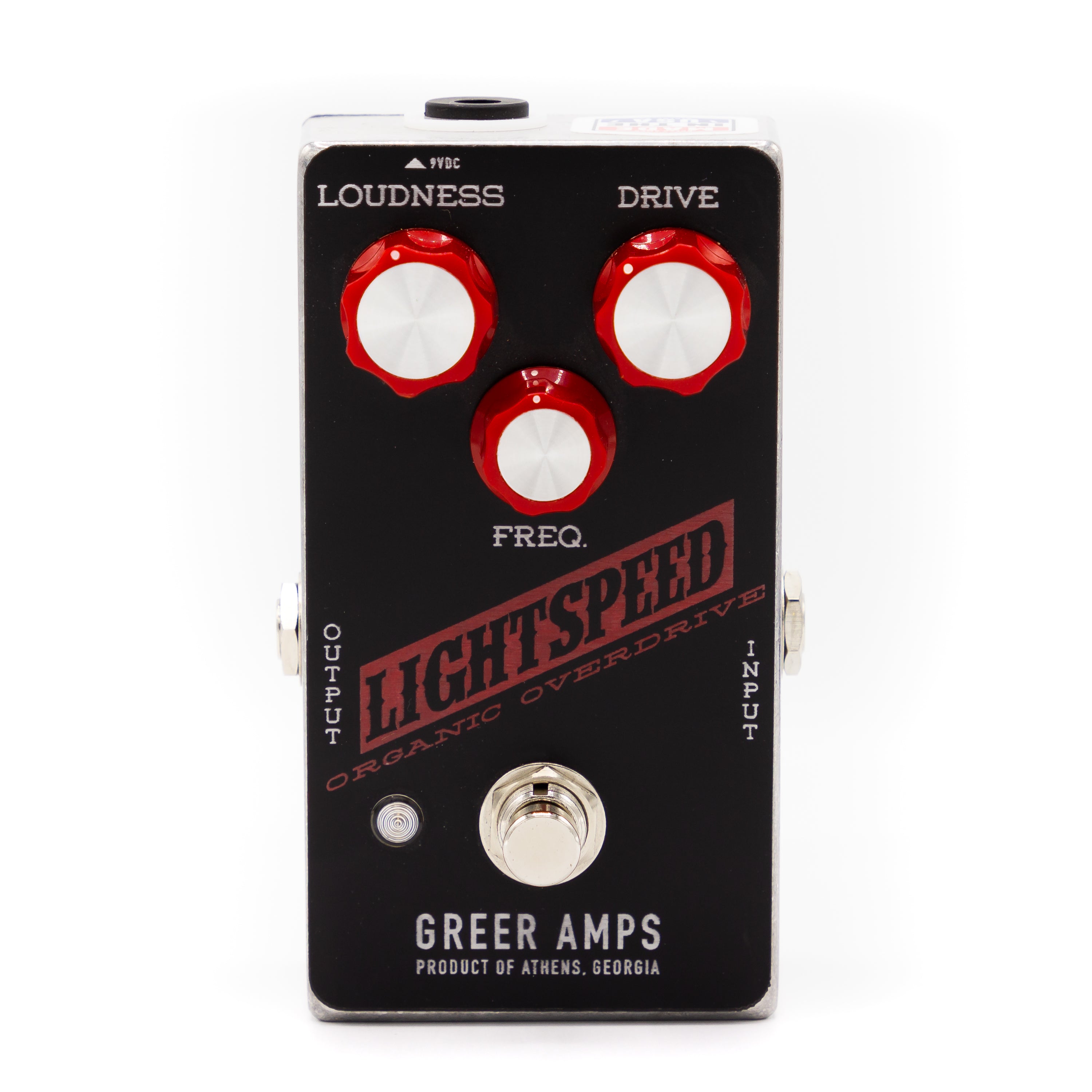
We openned up the pedals and they were just the same inside.

GREER LIGHTSPEED OVERDRIVE PLUS
I just wanted a little more sustain for solo stuff, so, I traded my trusty clean boost (HBE DOS MOS) plus some money for the Lightspeed.Ībout 2 days ago, a friend of mine came to my place so we could A/B his JHS Double Barrel with a version 3 of the Morning Glory although the DB is the MG on one side, for some reason it sounded thinner. Z non master volume Remedy and a Mark Kane "Kanewreck" Express). Being a low gainer was also a bonus to me, since I'm already happy with my amps dirty tones (Dr. When I first tried it at a store, it caught my attention how "transparent" it is. It really is a good overdrive pedal, better than 90% I've tried (had about 80 pedals in the past 10 years). If you value clarity, definition, amp-like grit, and responsiveness, the Lightspeed may well merit a little extra investment.First off, I don't meant to bash this pedal. But this is a superb overdrive by any measure-it excels at coaxing complex dirty tones in the low-mid gain range, and it can be set up for use as a transparent boost, or to throttle a tube into full-bodied breakup. Compared to many like-minded boxes on the market, it’s not cheap. The only real downside to the Greer Lightspeed Organic Overdrive is its price. Same goes for responsiveness to guitar-volume adjustments: The many shades of clean-yet robust-tones you can get using your volume knob attests to the basic sensitivity and sophistication in the Lightspeed circuit. settings, but otherwise the response to picking dynamics is superb. Things can get a little muddy when you mix humbuckers and the lowest freq. And for all the extra presence the Greer conjures, it’s genuinely difficult to get this little guy to sound harsh. Set it at high noon, and it delivers a slight increase in mids, which become more pronounced as you twist the knob clockwise. knob makes the pedal friendly to just about any pickup configuration. And when I needed a dose of Stones- or Faces-like swagger, I loved the sound of a Les Paul neck pickup and the Greer’s drive set around 4 o’clock.īut the expansive sweep of the Lightspeed’s freq. The grittiest tones have a lot of character, however, and there’s more than enough attitude to enable a clean amp to take on raunchy riffs like the Stones’ “Can’t You Hear Me Knocking.” Getting this kind of medium-gain grit is easy with humbuckers. The Lightspeed starts crystal clear and maxes out somewhere in the mild drive range. If you need an overdrive that also generates thick distortion, the Lightspeed is probably not your pedal (you might want to check out Greer’s Tone Smuggler instead). At this range, you can decrease the loudness for a fatter, unity-level lead tone or keep it high to use the Lightspeed for a sharp and glassy lead.

Kicking drive up to 10 o’clock yields more saturation, with the tones dancing between clean and gritty, depending on your picking intensity. Excellent tones for both single-coils and humbuckers. If you’re using a more powerful amp (in my case, an Orange OR50,) this is a great way to thicken the overall output and add sustain while retaining a relatively clean tone. This requires turning loudness to around 3 o’clock to reach unity gain. It can be set up as a very transparent near-clean boost by dropping the drive to the bare minimum.

One of the nicest things about the Lightspeed is its ability to add a range of drive-from light boost to dirtier tones. But there’s certainly something intriguing about what lurks behind the muck, especially on such a simple effect. For hardcore circuit nerds, this is a bummer. Popping off the four back-plate screws leads you to the 9V battery compartment and a circuit board dipped in a foggy epoxy to protect the identity of it’s secret components. Reverse-engineers beware: If you’re trying to dissect what makes this Greer organic, forget it. … the expansive sweep of the Lightspeed’s freq.


 0 kommentar(er)
0 kommentar(er)
